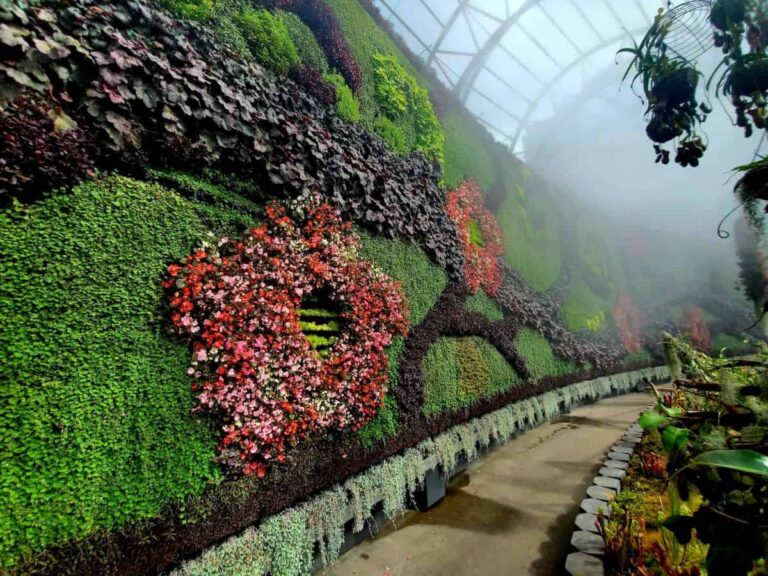Green walls are the greenest and most effective answer to the problems plaguing modern cities. They offer natural protection from noise pollution and smog, provide excellent insulation for energy-saving heating and cooling of buildings, and good fire resistance.
And that’s not all. The benefits that these particular natural ‘coverings’ can provide also touch the sphere of well-being, because the sight of them, instead of a concrete wall in the city jungle, rests the eye and relaxes the mind, even increasing property value.
Table of Contents
How many types of green walls are there?
But let’s take a closer look at what they really are. There are various types of green walls, all of which are easily adaptable to any architectural surface and can be modulated according to specific needs:
- partial or total cladding of external facades;
- self-supporting walls;
- retaining walls;
- fences.
Green walls can be built on large panels or assemblable modules, which blend in well with the features of the wall and guarantee the functionality of doors and windows.
There are two main types of modern systems for green walls. Firstly, the ventilated façade, ideal for covering the external walls of large buildings. And secondly, the sound-absorbing walls, designed exclusively to provide acoustic insulation and embellishment of urban areas near stations, road and motorway junctions, and railways.
The ventilated façade
One of the most popular vertical green systems, it involves a construction technique of assembling panels already complete with vegetation.
The panels are generally of oxidised aluminium sheet with a cell structure to house the plants and grooves to encourage water flow. The back side of the panels is blind, so there is no ‘moisture’ hazard to the walls of the building. The modules are also fixed to the wall by means of an aluminium grid that acts as a support. And, resists humidity and weathering.
Sound absorbing barriers
These are self-supporting barriers, single or double-sided, particularly suitable for reducing noise and improving urban aesthetics near railway stations and motorways.
Very light sub-layers are used for the filling, capable of retaining water and supplying the necessary nutrients to all the grafted plants.
The footprint of these structures is truly minimal (13.3 cm thick for single-sided, 22 cm for double-sided). Which makes them easily adaptable to any type of surface and context.
Read also: Urban greenery: how planting trees will save cities from rising temperatures
Green walls: the most suitable plant species
In the previous section we talked about the advantages of a green wall and examined assembly techniques and types of plants. Now it remains understand which plant species are most suitable for a natural covering for buildings or sound barriers, what kind of maintenance they require and what the costs of implementation are.
As far as plants are concerned, the choice almost always falls on low-maintenance varieties. I.e. requiring little care and sporadic intervention during the year. Another important feature, they must be ground cover, so there is room for climbers, bushes, shrubs and hanging plants.
The vegetation must be planted in favourable environmental and climatic conditions and it will be important to follow its development and adaptation especially in the first 8-12 months after planting.
Irrigation and fertilisation are the fundamental care for all varieties in plant walls. To guarantee water and fertiliser, automatic systems incorporated in the plants themselves are often in usage.
How much does a green wall cost
But how much does one spend for all this?
There are many factors that determine the final price. Firstly, the materials used for the structure, irrigation system, substrate, essences. As an example, consider that for a 2 metre high green wall, equipped with irrigation tanks and aluminium support structures. The cost is around 420-450 euros per square metre.
We will now refer to an indoor installation. Depending on the size of the project, the cost of an indoor plant wall ranges from 250 to 2,100 euros per square metre, including supply and installation costs.
Read also: Vertical forests around the world, extraordinary examples of sustainable architecture and design












